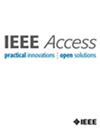FranSys—A Fast Non-Autoregressive Recurrent Neural Network for Multi-Step Ahead Prediction
IF 3.4
3区 计算机科学
Q2 COMPUTER SCIENCE, INFORMATION SYSTEMS
引用次数: 0
Abstract
Neural network-based nonlinear system identification is crucial for various multi-step ahead prediction tasks, including model predictive control and digital twins. These applications demand models that are not only accurate but also efficient in training and deployment. While current state-of-the-art neural network-based methods can identify accurate models, they often become prohibitively slow when scaled to achieve high accuracy, limiting their use in resource-constrained or time-critical applications. We propose FranSys, a Fast recurrent neural network-based method for multi-step ahead prediction in non-autoregressive System Identification. FranSys comprises three key innovations: 1) the first non-autoregressive RNN model structure for multi-step ahead prediction that enables much faster training and inference compared to autoregressive RNNs by separating state estimation and prediction into two specialized sub-models, 2) a state distribution alignment training technique that enhances generalizability and 3) a prediction horizon scheduling method that accelerates training by progressively increasing the prediction horizon. We evaluate FranSys on three publicly available benchmark datasets representing diverse systems, comparing its speed and accuracy against state-of-the-art RNN-based multi-step ahead prediction methods. The evaluation includes various prediction horizons, model sizes, and hyperparameter optimization settings, using both our own implementations and those from related work. Results demonstrate that FranSys is 10 to 100 times faster in training and inference with the same and often higher accuracy on test data than state-of-the-art RNN-based multi-step ahead prediction methods, particularly with long prediction horizons. This substantial speed improvement enables the application of larger neural network-based models with longer prediction horizons on resource-constrained systems in time-critical tasks, such as model predictive control and online learning of digital twins. The code of FranSys is publicly available.FranSys - 用于多步前瞻预测的快速非自回归递归神经网络
基于神经网络的非线性系统识别对于各种多步骤超前预测任务(包括模型预测控制和数字孪生)至关重要。这些应用要求模型不仅准确,而且在训练和部署方面高效。虽然目前最先进的基于神经网络的方法可以识别精确的模型,但当它们要达到高精度时,往往会变得非常缓慢,从而限制了它们在资源受限或时间紧迫的应用中的使用。我们提出的 FranSys 是一种基于快速循环神经网络的方法,用于非自回归系统识别中的多步超前预测。FranSys 包括三项关键创新:1)第一个用于多步超前预测的非自回归 RNN 模型结构,通过将状态估计和预测分离为两个专门的子模型,与自回归 RNN 相比,它能更快地完成训练和推理;2)一种状态分布对齐训练技术,可增强普适性;3)一种预测范围调度方法,通过逐步增加预测范围来加速训练。我们在三个代表不同系统的公开基准数据集上对 FranSys 进行了评估,并将其速度和准确性与最先进的基于 RNN 的多步超前预测方法进行了比较。评估包括各种预测范围、模型大小和超参数优化设置,使用的是我们自己的实现方法和相关工作中的实现方法。结果表明,与最先进的基于 RNN 的多步超前预测方法相比,FranSys 的训练和推理速度快 10 到 100 倍,而测试数据的准确率却与之相同,甚至更高,尤其是在长预测范围内。这种速度上的大幅提升使基于神经网络的大型模型能够在资源受限的系统中应用于时间紧迫的任务中,如模型预测控制和数字双胞胎的在线学习。FranSys 的代码是公开的。
本文章由计算机程序翻译,如有差异,请以英文原文为准。
求助全文
约1分钟内获得全文
求助全文
来源期刊

IEEE Access
COMPUTER SCIENCE, INFORMATION SYSTEMSENGIN-ENGINEERING, ELECTRICAL & ELECTRONIC
CiteScore
9.80
自引率
7.70%
发文量
6673
审稿时长
6 weeks
期刊介绍:
IEEE Access® is a multidisciplinary, open access (OA), applications-oriented, all-electronic archival journal that continuously presents the results of original research or development across all of IEEE''s fields of interest.
IEEE Access will publish articles that are of high interest to readers, original, technically correct, and clearly presented. Supported by author publication charges (APC), its hallmarks are a rapid peer review and publication process with open access to all readers. Unlike IEEE''s traditional Transactions or Journals, reviews are "binary", in that reviewers will either Accept or Reject an article in the form it is submitted in order to achieve rapid turnaround. Especially encouraged are submissions on:
Multidisciplinary topics, or applications-oriented articles and negative results that do not fit within the scope of IEEE''s traditional journals.
Practical articles discussing new experiments or measurement techniques, interesting solutions to engineering.
Development of new or improved fabrication or manufacturing techniques.
Reviews or survey articles of new or evolving fields oriented to assist others in understanding the new area.
 求助内容:
求助内容: 应助结果提醒方式:
应助结果提醒方式:


